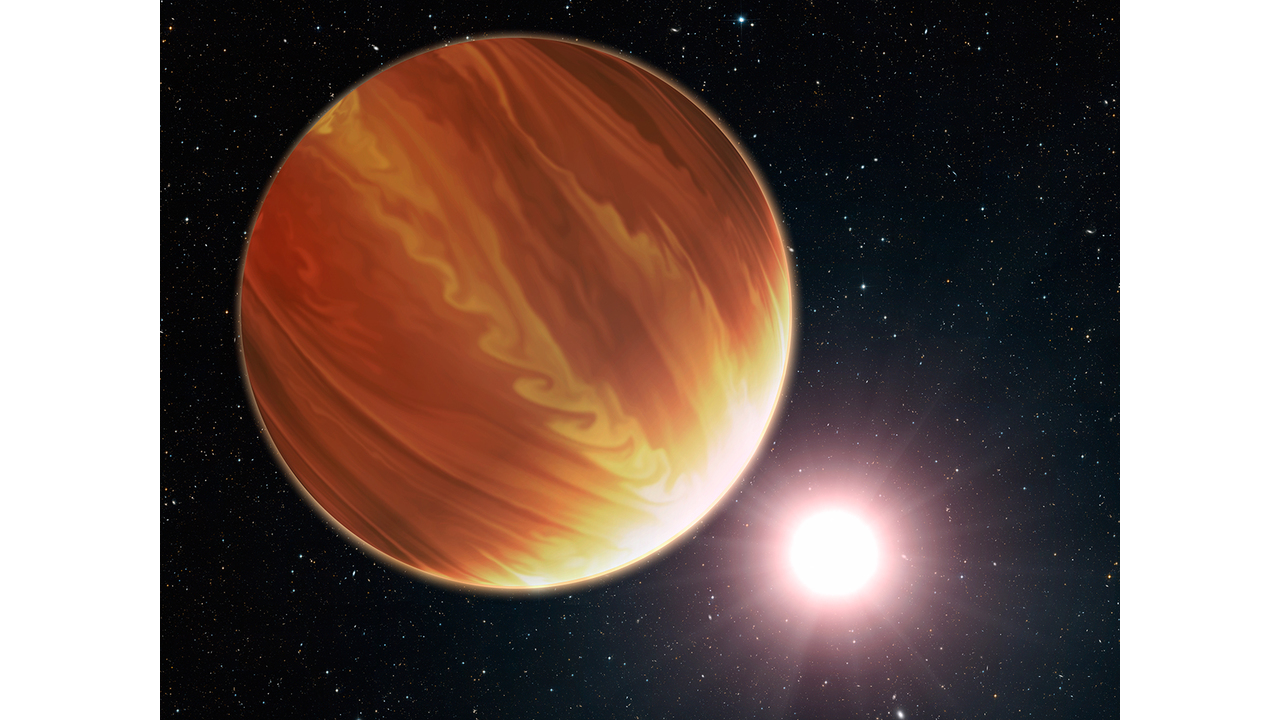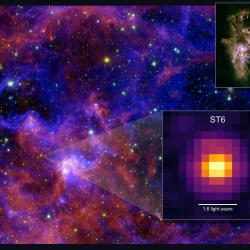Hubble Finds Three Surprisingly Dry Exoplanets
Astronomers using NASA's Hubble Space Telescope have gone looking for water vapor in the atmospheres of three planets orbiting stars similar to the sun—and have come up nearly dry.
The three planets, HD 189733b, HD 209458b, and WASP-12b, are between 60 and 900 light-years away. These giant gaseous worlds are so hot, with temperatures between 1,500 and 4,000 degrees Fahrenheit, that they are ideal candidates for detecting water vapor in their atmospheres.
However, to the surprise of the researchers, the planets surveyed have only one-tenth to one one-thousandth the amount of water predicted by standard planet-formation theories.
"Our water measurement in one of the planets, HD 209458b, is the highest-precision measurement of any chemical compound in a planet outside the solar system, and we can now say with much greater certainty than ever before that we've found water in an exoplanet," said Nikku Madhusudhan of the Institute of Astronomy at the University of Cambridge, England, who led the research. "However, the low water abundance we are finding is quite astonishing.
The findings were published on July 24, 2014 in The Astrophysical Journal Letters. The study included researchers from the Space Telescope Science Institute (STScI), the University of Maryland, Johns Hopkins University and the University of Toronto.
"There are so many things we still don't know about exoplanets, so this opens up a new chapter in understanding how planets and solar systems form," said UMD Astronomy Professor Drake Deming, who led one of the precursor studies. "The problem is that we are assuming the water to be as abundant as in our own solar system. What our study has shown is that water features could be a lot weaker than our expectations."
Madhusudhan emphasized that these results, though found in these large hot planets close to their parent stars, may have major implications for the search for water in potentially habitable Earth-sized exoplanets. Instruments on future space telescopes may need to be designed with a higher sensitivity if target planets are drier than predicted. "We should be prepared for much lower water abundances than predicted when looking at super-Earths (rocky planets that are several times the mass of Earth)," Madhusudhan said.
Using near-infrared spectra of the planets observed with Hubble, the research team estimated the amount of water vapor in the planetary atmospheres based on sophisticated computer models and statistical techniques to explain the data.
The planets were selected because they orbit relatively bright stars that provide enough radiation for an infrared-light spectrum to be taken. Absorption features from the water vapor in the planet's atmosphere are superimposed on the small amount of starlight that glances through the planet's atmosphere.
Detecting water is almost impossible for transiting planets from the ground because Earth's atmosphere has a lot of water in it that contaminates the observation. "We really need the Hubble Space Telescope to make such observations," said Nicolas Crouzet of the Dunlop Institute at the University of Toronto.
The currently accepted theory on how giant planets in our solar system formed is known as core accretion, in which a planet is formed around the young star in a protoplanetary disk made primarily of hydrogen, helium, and particles of ices and dust composed of other chemical elements. The dust particles stick to each other, eventually forming larger and larger grains. The gravitational forces of the disk draw in these grains and larger particles until a solid core forms. This then leads to runaway accretion of both solids and gas to eventually form a giant planet.
This theory predicts that the proportions of the different elements in the planet are enhanced relative to those in their star, especially oxygen that is supposed to be the most enhanced. Once the giant planet forms, its atmospheric oxygen is expected to be largely encompassed within water molecules. The very low levels of water vapor found by this research raises a number of questions about the chemical ingredients that lead to planet formation, say researchers.
The Hubble Space Telescope is a project of international cooperation between NASA and the European Space Agency. NASA's Goddard Space Flight Center in Greenbelt, Md., manages the telescope. STScI in Baltimore conducts Hubble science operations and is operated for NASA by the Association of Universities for Research in Astronomy, Inc., in Washington.
The research paper, “H2O Abundances in the Atmospheres of Three Hot Jupiters,” Nikku Madhusudhan, Nicolas Crouzet, Peter R. McCullough, Drake Deming and Christina Hedges, was published on July 24, 2014 in The Astrophysical Journal Letters.
Media Relations Contacts: Abby Robinson, 301-405-5845, abbyr@umd.edu; Sarah Collins, +44 (0)1223 332300, sarah.collins@admin.cam.ac.uk; J.D. Harrington, 202-358-5241, j.d.harrington@nasa.gov; Ray Villard, 410-338-4514, villard@stsci.edu
Writer: STScI/Ray Villard
University of Maryland
College of Computer, Mathematical, and Natural Sciences
2300 Symons Hall
College Park, Md. 20742
www.cmns.umd.edu
About the College of Computer, Mathematical, and Natural Sciences
The College of Computer, Mathematical, and Natural Sciences at the University of Maryland educates more than 7,000 future scientific leaders in its undergraduate and graduate programs each year. The college’s 10 departments and more than a dozen interdisciplinary research centers foster scientific discovery with annual sponsored research funding exceeding $150 million.








